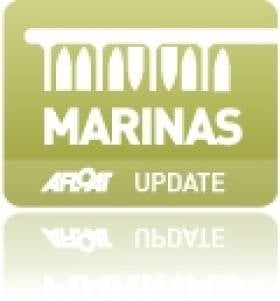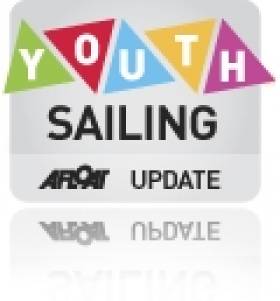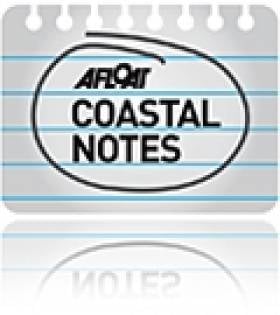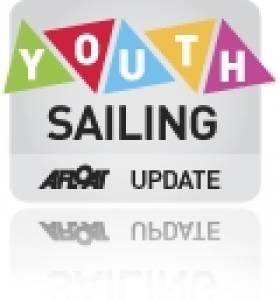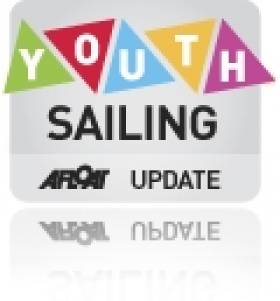Displaying items by tag: Croatia
Italian Marinas Facing a Tough 2011
In a bad omen for marinas in Ireland and elsewhere in Europe, Italian marina operators are facing a further decline in fortunes, according to boat industry website IBI Plus.
The site highlights a report in Italian newspaper Il Sole 24 Ore which says visitor numbers are falling as boatowners have fled to France, Corsica and Croatia - a result of growing unease with increased checks by the Italian financial police.
More and more berthed boats are up for sale, especially in the 10-20m range, while fuel sales are also dwindling, the report adds.
President of Italian marina association Assomarinas Roberto Perocchio told Il Sole 24 Ore that in some cases up to 20% of berthed boats are on the market, while 10% of clients have left the market.
Marina operators reported a decrease in visits on 2010, with some accusing Italy's Guardia di Finanza of being too heavy-handed.
IBI Plus has more on the story HERE.
ISAF Youth Medals Decided, Doran's Tenth is Top Irish Result
The medals in the eight fleets at the 41st ISAF Youth Sailing World Championship in Zadar, Croatia have been decided following a dramatic final day. Ireland's team of three take home one overall result in the top ten, an 11th and a 17th plus some fine individual performances - including a final race win today – and many lessons for next year's event on Dublin Bay.
For the third consecutive year France walk away with the ISAF Nations Trophy with Spain coming in second and Poland taking third place.
Irish Laser Radial sailor Philip Doran of Courtown Sailing Club and the National Yacht Club Doran took charge of the 15 knot north-westerly from the beginning of his final race, leading the fleet from the first mark. Competitors from Belgium, the UK and Australia tried to challenge him at the leeward mark but Doran continued to master the previously unseen wind conditions in this championship.
Doran ended the final race of the championship with an extraordinary first place win and finishing 10th overall, having also claimed five top 10 results during the course of the competition.
Irish Coach Rory Fitzpatrick praised the comeback: "It hadn't been going Philip's way at the half way stage in the event. He was sitting towards the back of the fleet but he fought hard over the next few days and finished in the top 10 which just shows the level of determination and mental strength he has".
But the success story doesn't end there. Royal St George Yacht Club and Quoile Yacht Club Laser Radial sailor Sophie Murphy placed 23rd in her final race which saw her finishing 11th overall. It's a disappointment to drop out of the coveted top ten position but there is consolation that it is the best result Ireland has ever had in the girl's single handed competition since Ireland began competing at the ISAF Youth Worlds in 1971.
Murphy found the conditions tough today but fought tooth and nail putting in her best performance at an international event. Similarl to Philip Doran, she also had one race win and five top 10 results during the course of the championship.
Fitzpatrick said: "This is Sophie's personal best at an international event and the best we've ever had at the Youth Worlds but she's only going to continue to grow and strengthen".
Cork natives Emma Geary from Royal Cork Yacht Club and Niamh Connolly from Baltimore Sailing Club put in another strong performance in the 420 class today. They made good tactical decisions on the water which saw them finishing the race in 12th and finishing the championship in 17th overall. The girls showed their prowess in the stronger wind conditions of the past two days placing a 9th, a 6th and today's 12th.
Just one point separated Singapore 2010 Youth Olympic Games silver medallist Veronica Fanciulli (ITA) and YOG gold medallist Siripon Kaewduang–Ngam (THA) at the top of the RS:X Girls leader board ahead of the final race. And it was Fanciulli that came ahead of the Kaewduang–Ngam in fifth place compared to the Thai RS:X sailors sixth place to win the gold medal in Zadar. Fanciulli said, "The race was good. I finished fifth and the Thai girl finished sixth and I won the whole competition.
"At the Youth Olympic Games there was very light wind and the Thai girl was very good in the light wind and today was a windy day and I am really happy." Watch the full interview with Fanciulli here.
Agnieszka Bilska (POL) won the final race today but it wasn't enough to overhaul Naomi Cohen (ISR) who finished second to clinch the bronze medal.
In the RS:X Boys Korea's Cho Wonwoo, who won silver at the 2010 ISAF Youth Worlds, went one better in 2011 winning the gold medal. Wonwoo, who is on the ISAF Athlete Participation Programme has benefitted from the coaching of Hugh Styles throughout the week and was delighted with his performance. He said, "I am very happy and happy to win. I was very nervous and today I am the winner." Full interview with Wonwoo here.
Mateo Sanz (ESP) came through in second overall followed by France's Louis Giard who retired after the finish today but had already done enough to clinch the bronze medal.
Maxime Mazard (FRA) came out on top in the Laser Radial Boys following a battle against Giovanni Coccoluto (ITA). The Frenchman finished 13th compared to the Italians 20th place which handed Mazard the gold medal. Mazard said, "It was my first ISAF Youth Worlds and it was fantastic. Everyone was really close and the Italian was eight places behind me and I just did my race as normal.
"I don't think I realise what's happened." Watch an interview with Mazard here.
Žan-Luka Zelko (SLO) recorded two race wins throughout the week and after his 11th place finish today he receives the silver medal for Slovenia. Coccoluto's 20th place finish saw him slip down to pick up the bronze medal.
Norway's Tiril Bue brought a six point cushion into the final day and after finishing sixth today she won the gold medal. Bue said, "It was great, especially the three last days. They were the best. I love Zadar. It is sunny and warm and great wind conditions. It is just crazy. I never thought I would win the whole championship." Tiril Bue spoke to ISAF after the racing, watch an interview here.
The competition for silver and bronze was tense leading up to the final day with two points separating second and fourth place. Manami Doi (JPN) went into the final race second, Paulina Czubachowska (POL) started in third and Erika Reineke (USA) was fourth.
In the end Reineke came through in second after finishing fifth today but a late charge by France's Sandy Fauthoux, which saw the French girl finish second, meant she picked up the bronze medal by two points after Doi came down in 11th and Czubachowska ended the last race in 15th position.
Martin Lowy and Kim Andrade (BRA) clinched the gold medal in the SL16 after they came seventh in the final race of the championship. The boys from Brazil have had an excellent regatta and won eight races out of the 12 sailed in Zadar. Lowy said, "It was very good. Everything is perfect. I love it." Watch the emotion of the boys from Brazil here.
Denmark's Nicolaj Bjornholt Christiansen and Daniel Bjornholt Christiansen finished with a bullet today to pick up the silver medal and Great Britain's Rupert White and Nikola Boniface came through in second to secure the bronze medal.
Consistent results at the front of the fleet is vital and Spain's Carlos Robles and Florian Trittel exemplified this point after finishing in the top six in 11 races in the 29er to seal the gold medal. After the race Robles said, "I am really happy. We were celebrating on the course for ages with the Spanish Laser Radial sailor."
And Trittel added, "I am very happy. It is a beautiful day today and a perfect championship for us." ISAF spoke to the pair immediately after the racing.
Antoine Screve and Max Agnese (USA) pipped the Netherlands Max Deckers and Annette Duetz to the silver medal following their second place finish today compared to the Dutch duos fourth place.
Like their compatriots Jordi Xammar and Alex Claville (ESP) also showed a level of control and consistency that saw them awarded the gold medal. Xammar receives his second ISAF Youth Worlds gold medal following his success with Joan Herp at the 2010 regatta in Istanbul, Turkey. Xammar said, "It is incredible. Nothing to say apart from thanks to everybody helping me to arrive here. I just want to say thanks to the people that help me everyday with my training. Today is for saying thanks for all the help." A delighted Xammar spoke to ISAF following the crews celebrations.
Daichi Mototsu and Yuki Hino won the silver medal after their bullet today and Australia's Angus Galloway and Alexander Gough received the bronze medal.
Lara Vadlau and Tanja Frank (AUT) won gold in the 420 Girls following a nervy race against Morgan Kiss and Christina Lewis (USA). The Austrians finished the final race in eighth compared to the Americans third place meaning they were tied on 34 points apiece. Both teams had two race wins but the Austrians came out on top having had three second place finishes. Vadlau said, "We are very proud and it was a hard job to win and finally we did. We had lots of luck but everyone needs luck to win."
Frank added, "We were happy but we didn't know when we came off the water so we went to the list and asking everyone if we had win. And we were happy when we found out we had won." View the full interview here.
Fiona Kidd (CAN), the Chairman of the ISAF Youth World Championship Sub-committee rounded off the 41st ISAF Youth Worlds, "The organisation has been world class. The organising committee has done an exceptional job both on and off the water. Logistically it is a very difficult event but here we've had superb sailing, the race management has been excellent and on shore they've done a super job in terms of making every body enjoy the event.
"It's great to see all the sailors having a good time. We've had two fantastic days of racing today and yesterday and I think we got all the races in. At the end of the day the best sailors won and they've all had a fantastic time."
Ireland's Bathing Spots Among Cleanest in Europe
Ireland has ranked fifth in a new Europe-wide report on bathing water quality - but some beaches in Northern Ireland are falling short of strict EU standards.
MEP Jim Higgins welcomed the results of the annual Bathing Water Report for 2010, saying: "Ireland's scenic attributes are a primary reason for attracting tourists and it is essential that our coastal and inland bathing sites are also enticing."
Ireland has moved up five places from its overall rank of 10th in 2009, with 90.1% of all bathing water sites meeting the EU's Blue Flag guidelines for water quality at beaches and swimming spots.
However, the Daily Telegraph reports that a number of beaches in Northern Ireland and other parts of the UK were judged to be 'poor'.
Beaches at Newcastle and Ballyholme in the North are among 16 across the UK that did not pass the EU's strict checks for Blue Flags.
The 2010 report ranks Cyprus as the cleanest bathing spot in Europe, with 100% of sites passing EU insspection. It was closely followed by Croatia with 97.3%, Malta at 95.4% and Greece at 94.2%.
300 Top Junior Sailors Bound for Dublin Bay
Over 300 sailors will compete in Dublin Bay in seven different classes (Laser Radial, Laser 4.7, 420, Feva, Topper, SL16 and Optimist). For youth sailors, this event is the most important in the annual calendar as it is the decider for the top Irish sailors to compete internationally during 2011 and is the pathway for future Olympic sailors. Podcast with Olympic Team Manager James O'Callaghan here.
The 420 fleet is already in situ as the Leinster Championships were held over Easter and the girls team Emma Geary and Niamh Connolly won the event in style. This team is the only 420 crew to qualify internationally for a place on the Irish team to compete in the ISAF Youth Worlds in Zadar, Croatia and will be looking to win next weekend to secure this honour.
Dublin Bay will host the 2012 ISAF Youth World Championships and this year's ISA Mitsubishi Youth National event is an important test event with representatives from the international sailing authority visiting Dun Laoghaire to view plans and test logistics.
In addition to the 420 fleet the Laser radial fleet will also be competing to qualify to represent Ireland in Croatia. Philip Doran aged 17 from Courtown in Wexford is the current former under 17 World Champion in the Laser Radial fleet although the National title has eluded him so far. In the girls fleet it will be a toss up between Saskia Tidey (RIYC) and Sophie Murphy (Quoile YC) as both already have a national title each under their belts.

A fleet of top Optimists are expected. Photo: Bob Bateman
The younger Optimist fleet is also celebrating this week after two top 5 positions at the Easter Regatta in Braassemermeer, the Netherlands. In fact an Irish team has competed at this event for 23 years and this is the first time that Ireland has won the country prize. Sean Donnelly from Dun Laoghaire who finished fourth in Braassemermeer is also leading the Optimist fleet in the trials and will be anxious to hold on to first position during the ISA Mitsubishi Youth Nationals.
In other fleets, the laser 4.7 fleet is enjoying record numbers with many ex-Optimist and Topper sailors choosing this boat. Finn Lynch from Blessington and Seafra Guilfoyle from Cork will be firm favourites to win the class.
Overall Dublin Bay will be a spectacle of sail over the May Bank holiday weekend with light winds forecast.
Mitsubishi Motors have been a proud supporter of junior sailing in Ireland for the last 7 years. In recent years Ireland has had successes at youth level with winner of the girls under 21 Laser World Championships and a top 10 at the 2010 ISAF Youth Worlds and wins at the British National Optimist Championships.
Youth Worlds Places Up for Grabs on Dublin Bay (Podcast)
Olympic team manager James O'Callaghan has played a big role in bringing on Irish team talent. Results have been achieved in recent times in the Topper, Laser 4.7 and Radial and 420 but a top result in the youth worlds would make all the effort worthwhile.
Ireland's best ever Youth Worlds result came in 1996 when Laura Dillon and Ciara Peelo took bronze in the Laser II dinghy. The stated aim for 2012 is to at least equal this result and win a medal on the home waters of Dublin Bay.
Listen to the podcast below to hear O'Callaghan's take on the front runners for April's important Youth selection event.
Watch a preview for July's ISAF Croatian Youth Worlds Event below


























